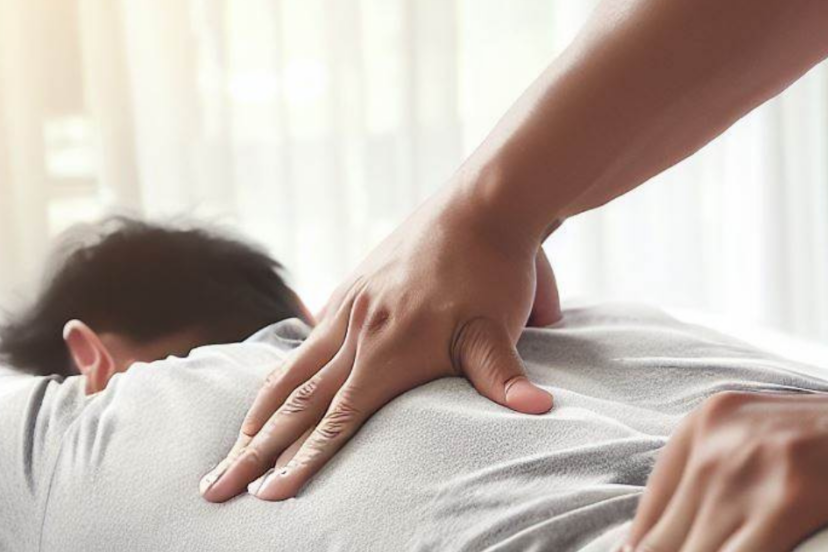As an enthusiast and advisor in the realm of lower back pain management, I understand the challenges and impact this condition can have on one’s daily life. Today, I invite you to explore the world of self-care for lower back pain—an empowering approach that puts you in control of your well-being. Drawing from personal experiences and insights, I will provide helpful suggestions and reasons behind the significance of self-care in managing lower back pain.
Lower back pain is a common ailment that affects millions of people worldwide, myself included. It can range from mild discomfort to debilitating pain, limiting our ability to engage in daily activities. While seeking medical guidance is crucial for proper diagnosis and treatment, incorporating self-care strategies into your routine can significantly contribute to your overall well-being and pain management.
Understanding Lower Back Pain
Lower back pain can stem from various causes, such as muscle strains, poor posture, sedentary lifestyle, or underlying conditions. Understanding the factors that contribute to lower back pain is essential for developing effective self-care strategies.
Self-Care Strategies for Lower Back Pain
When it comes to self-care for lower back pain, a multifaceted approach is key. Let’s explore some essential strategies and techniques that can provide relief and promote healing.
Maintaining Proper Posture
Proper posture plays a vital role in preventing and managing lower back pain. Maintaining a neutral spine alignment while standing, sitting, and lifting can alleviate strain on the back. Engage your core muscles, distribute your weight evenly, and avoid slouching to support a healthy spine.
Regular Exercise and Stretching
Regular exercise and targeted stretching can strengthen the muscles supporting the lower back and improve flexibility. Engaging in activities like walking, swimming, or yoga helps promote blood circulation, reduce stiffness, and enhance overall back health. Consult with a healthcare professional or a certified trainer to identify exercises and stretches suitable for your condition.
Ergonomic Modifications
Make ergonomic modifications to your environment to minimize strain on your lower back. Adjust the height and positioning of your work desk and chair to maintain proper alignment. Look into
recliner chairs and best options for good sitting posture. Use supportive cushions or lumbar rolls to provide additional support to the lower back. Ensure your mattress and pillows are of good quality and provide adequate support to your spine while sleeping.
Heat and Cold Therapy
Temperature therapy can provide temporary relief for lower back pain. Applying a heating pad or hot water bottle to the affected area helps relax muscles and increase blood flow, promoting healing. On the other hand, cold therapy, such as ice packs or cold compresses, can reduce inflammation and numb the area, offering pain relief. Alternate between heat and cold therapy based on your comfort and preferences.
Mind-Body Techniques
Stress and tension can exacerbate lower back pain. Incorporating mind-body techniques into your self-care routine can help reduce stress and promote relaxation, benefiting your overall well-being. Practices like deep breathing exercises, meditation, and mindfulness can calm the mind and alleviate muscle tension, ultimately easing lower back pain.
Implementing a Self-Care Routine
Now that we’ve explored various self-care strategies, it’s essential to implement them effectively to maximize their benefits. Consider the following tips to establish a self-care routine tailored to your needs:
Setting Realistic Goals
Set achievable goals that align with your lifestyle and condition. Start with small steps and gradually incorporate more self-care practices into your routine. This approach ensures that you can sustain your efforts and experience long-term benefits.
Establishing a Self-Care Plan
Create a personalized self-care plan that includes a combination of strategies discussed earlier. Develop a daily or weekly schedule that outlines specific exercises, stretching routines, and relaxation techniques. Consider incorporating self-care practices into your existing daily routines, such as during breaks at work or before bedtime.
Seeking Professional Guidance When Needed
While self-care is empowering, it’s crucial to seek professional guidance when necessary. If your lower back pain persists or worsens despite self-care efforts, consult with a healthcare professional or a qualified physical therapist. They can provide a comprehensive evaluation, offer tailored advice, and guide you through advanced techniques or therapies.
Closing remarks
In the realm of lower back pain self-care, you hold the key to relief and improved well-being. By incorporating strategies such as maintaining proper posture, regular exercise and stretching, ergonomic modifications, heat and cold therapy, and mind-body techniques, you can take control of your lower back pain and promote healing. Remember to set realistic goals, establish a self-care plan, and seek professional guidance when needed. Empower yourself with self-care practices, and enjoy the benefits of a healthier and pain-free back.
FAQs
1. How long does it take for self-care strategies to show results for lower back pain?
The timeline for experiencing results from self-care strategies can vary depending on individual factors and the severity of your condition. With consistency and dedication, you may notice improvements within a few weeks to a couple of months.
2. Are there specific exercises or stretches recommended for lower back pain?
While specific exercises and stretches vary based on individual needs, some commonly recommended ones for lower back pain include pelvic tilts, knee-to-chest stretches, cat-camel stretches, and gentle yoga poses like child’s pose and downward dog. Consult with a healthcare professional or a certified trainer for personalized recommendations.
3. Can self-care alone replace medical intervention for severe lower back pain?
Self-care practices are beneficial for managing and preventing lower back pain, but in cases of severe or chronic pain, medical intervention may be necessary. It’s essential to consult with a healthcare professional for a comprehensive evaluation and appropriate treatment options.
4. Is it possible to prevent lower back pain through self-care practices?
While it’s not always possible to prevent lower back pain entirely, adopting healthy lifestyle habits and incorporating self-care practices can significantly reduce the risk. Maintaining good posture, engaging in regular exercise, and practicing stress management techniques are important preventive measures.
5. What are some tips for incorporating self-care into daily life for long-term relief?
Make self-care a priority: Set aside dedicated time each day for self-care activities related to your lower back pain, even if it’s just a few minutes. Treat it as an essential part of your daily routine.
Stay consistent: Consistency is key when it comes to self-care. Stick to your self-care plan and make it a habit. Regular practice will yield better results over time.
Listen to your body: Pay attention to how your body responds to different self-care strategies. Adjust and modify your routine based on what feels most effective and comfortable for you.
Stay active: Incorporate movement into your daily life. Engage in activities you enjoy that promote overall fitness and flexibility, as it can contribute to the health of your lower back.
Practice stress management: Stress can exacerbate lower back pain. Explore stress-reduction techniques such as meditation, deep breathing exercises, or engaging in hobbies that help you relax and unwind.
Prioritize sleep: Quality sleep is essential for healing and overall well-being. Maintain a consistent sleep schedule, create a comfortable sleep environment, and consider using supportive pillows or mattresses.
Remember, self-care is a continuous journey, and it’s important to personalize your approach based on your unique needs and preferences. By incorporating these tips into your daily life, you can nurture your lower back health and experience long-term relief.
In conclusion, self-care is a powerful tool in managing lower back pain. By adopting strategies such as maintaining proper posture, engaging in regular exercise and stretching, making ergonomic modifications, utilizing heat and cold therapy, and practicing mind-body techniques, you can take charge of your lower back health and find relief. Remember to set realistic goals, establish a self-care routine, seek professional guidance when needed, and make self-care a consistent part of your lifestyle. Through self-care, you can empower yourself to live a life with reduced lower back pain and improved well-being.
*We may earn a commission from purchases made through our links, at no cost to you. This does not affect our product recommendations. Please see our disclosure to learn more.
![Urban Health Hive]](https://urbanhealthhive.com/wp-content/uploads/2023/05/cropped-cropped-Health_Logo.png)



